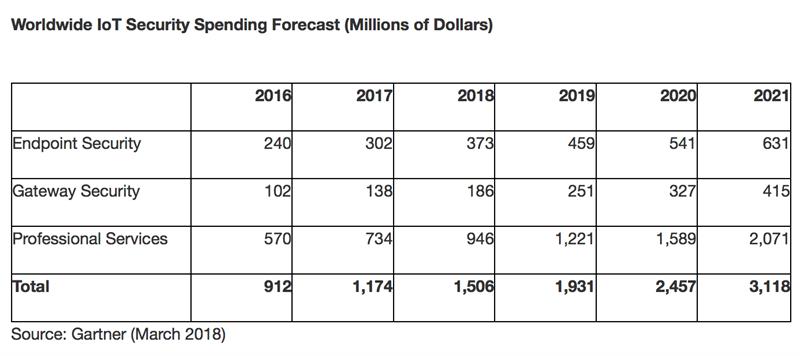To protect against those threats, Gartner believes that the worldwide spending on IoT security will rise by 28%, reaching $1.5 billion this year.
"In IoT initiatives, organisations often don't have control over the source and nature of the software and hardware being utilised by smart connected devices," says Ruggero Contu, research director at Gartner. "We expect to see demand for tools and services aimed at improving discovery and asset management, software and hardware security assessment, and penetration testing. In addition, organisations will look to increase their understanding of the implications of externalising network connectivity. These factors will be the main drivers of spending growth for the forecast period with spending on IoT security expected to reach $3.1 billion in 2021.

Despite the steady year-over-year growth in worldwide spending, Gartner predicts that through 2020, the biggest inhibitor to growth for IoT security will come from a lack of prioritisation and implementation of security best practices and tools in IoT initiative planning. Gartner says this will hamper the potential spend on IoT security by 80%.
"Although IoT security is consistently referred to as a primary concern, most IoT security implementations have been planned, deployed and operated at the business-unit level, in cooperation with some IT departments to ensure the IT portions affected by the devices are sufficiently addressed," explains Contu. "However, coordination via common architecture or a consistent security strategy is all but absent, and vendor product and service selection remains largely ad hoc, based upon the device provider's alliances with partners or the core system that the devices are enhancing or replacing."
While basic security patterns have been revealed in many vertical projects, they have not yet been codified into policy or design templates to allow for consistent reuse, Gartner describes.
As a result, Gartner continues to explain, technical standards for specific IoT security components in the industry are only just starting to be addressed across established IT security standards bodies, consortium organisations and vendor alliances.
The absence of ‘security by design’, Gartner believes, comes from a lack of specific and stringent regulations. Going forward, it expects this trend to change, especially in heavily regulated industries.
By 2021, Gartner anticipates that regulatory compliance will become the prime influencer for IoT security uptake.
"Interest is growing in improving automation in operational processes through the deployment of intelligent connected devices, such as sensors, robots and remote connectivity, often through cloud-based services," continues Contu. "This innovation, often described as IIoT or Industry 4.0, is already impacting security in industry sectors deploying operational technology, such as energy, oil and gas, transportation, and manufacturing."













